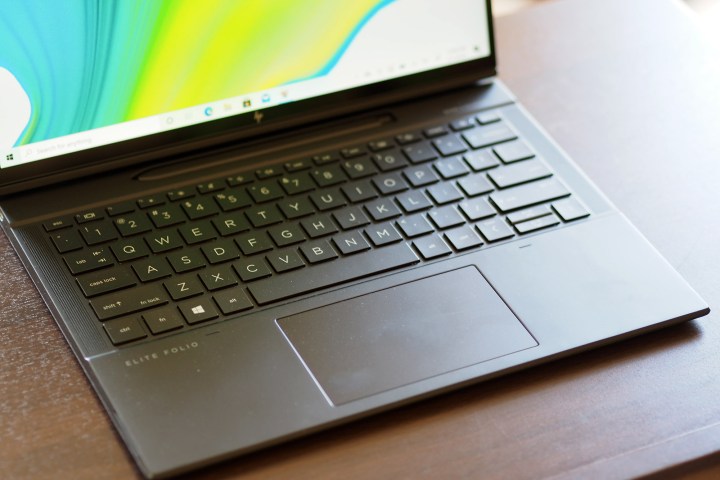Keyboard shortcuts can speed up even the most mundane of Windows 10 tasks. Learning the best of them can make your PC experience faster, more efficient, and, in some cases, even more enjoyable.
These are the essential Windows 10 shortcuts that can make you feel more like a PC wizard. A master of the keys, so to speak.
New Windows 10 keyboard shortcuts

Windows 10 opened up a world of new keyboard shortcuts to better navigate and utilize the operating system’s interface and features. Below, you’ll find nearly 20 keyboard functions added to Microsoft’s popular OS since 2015.
Remember that many commands require you to hold down the Windows key (⊞) located on the spacebar’s left before punching the appropriate letter or key. Also, don’t feel bad about referring back to this chart as needed — memorization will come in time.
| ⊞ Win + S | Opens Search |
| ⊞ Win + I | Opens Settings |
| ⊞ Win + A | Opens Action Center |
| ⊞ Win + X | Opens Quick Link menu |
| ⊞ Win + Left Arrow | Snaps active window to the left |
| ⊞ Win + Right Arrow | Snaps active window to the right |
| ⊞ Win + Up Arrow | Maximizes the current window |
| ⊞ Win + Down Arrow | Minimizes or hides current window |
| ⊞ Win + Ctrl + D | Creates a new virtual desktop |
| ⊞ Win + Ctrl + Left Arrow | Cycles through virtual desktops to the left |
| ⊞ Win + Ctrl + Right Arrow | Cycles through virtual desktops to the right |
| ⊞ Win + Ctrl + F4 (some keyboards may require Win + Fn + Ctrl + F4) | Closes current desktop |
| ⊞ Win + TAB | Accesses all desktops and apps in Task View |
| ⊞ Win + PrtSc | Takes a screenshot and saves it to Screenshots folder |
| ⊞ Win + G | Opens Game bar |
| ⊞ Win + Alt + G | Records the last 30 seconds (for Xbox Game bar) |
| ⊞ Win + Alt + R | Manually starts and stops recording (for Xbox Game bar) |
Command Prompt shortcuts
The revised Windows 10 Command Prompt also includes updated shortcuts for easier use.
| Shift + Left Arrow | Highlights text on the cursor’s left |
| Shift + Right Arrow | Highlights text to the cursor’s right |
| Ctrl + C | Copies selected text to clipboard |
| Ctrl + V | Pastes text from clipboard |
| Ctrl + A | Selects all text |
General Windows 10 keyboard shortcuts
There are plenty of returning keyboard shortcuts to go along with all the new Windows 10 shortcuts. The following are some of the most basic, general, and sought-after keyboard shortcuts for general day-to-day use in Windows.
| Keyboard shortcut | Function |
| ⊞ Win | Displays or hides Start |
| Ctrl + Shift + Esc | Opens the Task Manager |
| ⊞ Win + M | Minimizes all windows |
| ⊞ Win + Shift + M | Restores all minimized windows |
| ⊞ Win + R | Opens the Run dialogue box |
| ⊞ Win + F1 (some keyboards may require Win + Fn + F1) | Opens Windows Help and Support |
| ⊞ Win + Plus (“+”) | Zooms in using Magnifier |
| ⊞ Win + Minus (“-“) | Zooms out using Magnifier |
| ⊞ Win + L | Locks your PC or switches accounts |
| Alt + F4 | Closes the current item or exits the current app |
| Alt + Enter | Displays properties for the selected item |
| Alt + Spacebar | Opens shortcut menu for an active window |
| Ctrl + X | Cuts a selected item |
| Ctrl + V | Pastes a selected item |
| Ctrl + Y | Redo a previous action |
| Ctrl + Z | Undo a previous action |
| F1 (some keyboards may require Fn + F1) | Displays help (app-specific) |
| F2 | Renames a selected item |
| F3 | Searches for a file or folder in File Explorer |
| F4 | Displays the address bar list in File Explorer |
| F5 | Refreshes an active window |
| F10 | Activates the menu bar in an active app |
| ⊞ Win+ D | Displays and hides desktop |
You can capitalize on maximum efficiency with this list of shortcuts, and your keyboard will be your new favorite tool. Older keyboards may not possess the capacity for such optimization, so we recommend that you purchase a new keyboard to take full advantage of all these shortcuts. We can help you find the best new keyboard.
First, decide on the keyboard type you like. (Wireless keyboards are excellent for unconventional/mobile setups. Ergonomic keyboards are great for those prone to wrist problems.) Second, be sure to check out our roundup of the latest deals on wireless keyboards and our list of the best keyboards.
Editors’ Recommendations




